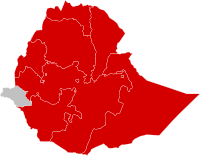
Photo from wikipedia
Abstract On 20 April 2020, the West Texas Intermediate (WTI) crude oil price dropped to negative levels for the first time in history. This study examines the factors underlying the… Click to show full abstract
Abstract On 20 April 2020, the West Texas Intermediate (WTI) crude oil price dropped to negative levels for the first time in history. This study examines the factors underlying the historic oil price fluctuation during the Covid-19 pandemic. The autoregressive distributed lag (ARDL) bounds testing approach incorporating a structural break is applied to the daily series from 17 January to 14 September 2020 to analyze long-run relationships and short-run dynamics. The results reveal that increases in Covid-19 pandemic cases, US economic policy uncertainty, and expected stock market volatility contributed to the fall in the WTI crude oil price, whereas the fall in the global stock markets appears to significantly reduce the fall. Furthermore, the Russia–Saudi Arabia oil price war and speculation on oil futures are shown to play a critical part in the collapse of the oil markets. The findings are consistent with our expectations. Although it is reasonable to assume that the solution to this oil crisis is a pick-up in global oil demand, which will occur only when the novel coronavirus is defeated, this study proposes policy recommendations to cope with the current oil price crash.
Journal Title: Research in International Business and Finance
Year Published: 2021
Link to full text (if available)
Share on Social Media: Sign Up to like & get
recommendations!